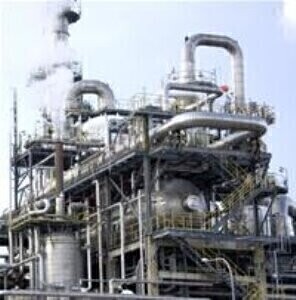Fuel for Thought
How Can Oil Refineries Survive the Energy Transition?
Feb 25 2023
The world's energy transition is expected to result in a peak in the use of oil-based fuels in the coming years, followed by a gradual decline. This trend is being led by the transportation sector, which is shifting away from gasoline towards electric vehicles and other low-carbon alternatives. This change is expected to reduce demand for oil products, such as gasoline and diesel, but will also create new opportunities for capturing the growing demand for petrochemicals.
Petrochemical feedstocks are used in the production of polymers for plastics, synthetic fibers, and other petrochemical intermediates, and demand for these products is expected to continue growing with rising global wealth. This poses a dual challenge for the world's more than 600 refiners: lower overall demand means less need for refining capacity, but the remaining capacity must evolve to match a shift in product mix to meet petrochemical demand. Refiners must find ways to make much less gasoline, marginally less diesel, and more jet fuel and petrochemical feedstocks.
Forward-looking refiners are already looking for opportunities to adjust or modify their production modes to capture growing demand for petrochemicals, such as increasing their output of naphtha, propylene, and reformate, the building blocks of other petrochemicals. Refineries already produce some petrochemical feedstocks but typically at rates no higher than 10 percent of total output.
The world's refiners must fundamentally rethink how refineries are designed and operated. Given how long it takes to make capital investments and build new plants, they should begin this review now. In this article, we consider the emerging options available to refineries in terms of technology and overall operations strategy.
Rethinking Refinery Operations
Globally, refiners have the capacity to process nearly 100 million barrels of crude oil per day. As global demand declines, refinery utilization is expected to drop in the key markets of Western Europe and Asia. By the middle of this decade, utilization in those markets could drop from the current rate of 85 percent to percentages in the low 70s. Refinery utilization in North America will be slightly stronger due to location advantages for export markets and crude supply. But all markets will see a significant contraction in profit margins as a result of the general decline in utilization.
Overall, the drop in utilization and profitability could result in capacity closures that will affect the least efficient plants and those less able to adapt to new demands. This scenario leaves most of the current plants operating but with growing pressure to adapt to new conditions, despite narrow margins and decreased cash flows to fund changes.
Many refiners are considering shifting away from refining crude into mostly fuels and are instead looking to refine crude into chemicals, though few have begun the transition in earnest. Part of the challenge is that there is a wide array of approaches, and they all require significant capital investment. We see three ways for players to increase the petrochemical yield of refinery operations: change individual process units, change the mix of process units, or build more direct crude-to-chemicals plants.
New Process Technologies
The individual process unit that receives the most attention is the fluid catalytic cracker (FCC), the longtime workhorse of refining. The FCC is a cracking unit that converts vacuum gasoil—a high-density, low-value component of crude oil—into more valuable products, such as gasoline. FCC production typically accounts for about 40 percent of the total gasoline pool. Gasoline from units that use FCC products as feedstock for processes such as alkylation bring the total to more than 50 percent of the pool. FCC gasoline contains naphtha and aromatic
Digital Edition
PIN 25.1 Feb/March
March 2024
In This Edition Safety - The technology behind the ION Science Tiger XT - Safety with ammonia and LOHCs as hydrogen carriers Analytical Instrumentation - Discussion on new tribology te...
View all digital editions
Events
Apr 28 2024 Montreal, Quebec, Canada
Apr 30 2024 Birmingham, UK
May 03 2024 Seoul, South Korea
May 05 2024 Seville, Spain
May 06 2024 Riyadh, Saudi Arabia


















